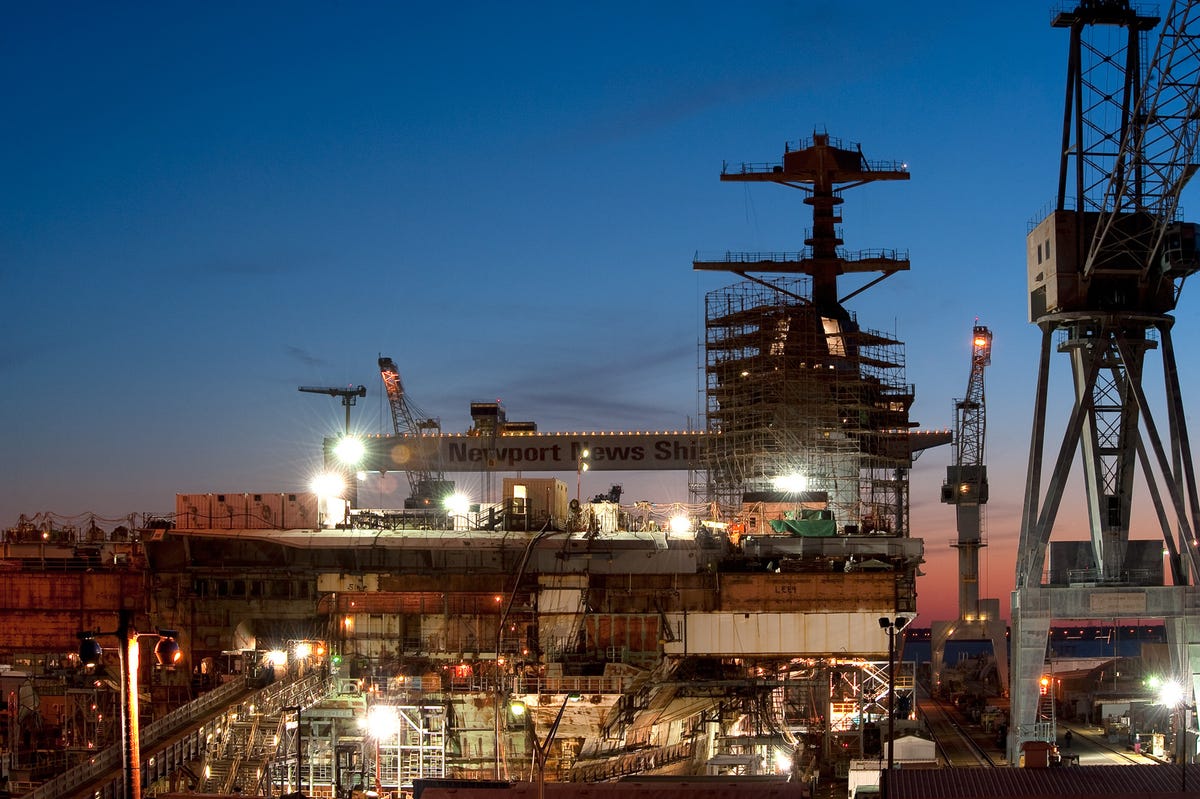The Military Base At The Heart Of US-China Rivalry

Table of Contents
Strategic Location and Importance of US Military Bases in the Indo-Pacific
The US military maintains a network of strategically vital bases across the Indo-Pacific region, forming the bedrock of its Indo-Pacific strategy. These forward-deployed assets are crucial for power projection, deterrence, and supporting regional alliances. Their proximity to China is not coincidental; they serve as a crucial counterbalance to China's growing military might.
-
Examples of Key US Bases and their Capabilities: Guam, with its Andersen Air Force Base and Naval Base Guam, offers significant air and naval capabilities. Okinawa, Japan, hosts Kadena Air Base, a critical air power hub. Other bases in the Philippines, South Korea, and Australia further strengthen the US strategic presence.
-
Strategic Significance Concerning Potential Conflict Zones: These bases are positioned to respond rapidly to potential crises in the Taiwan Strait and the South China Sea, crucial areas of contention with China. Their presence aims to deter aggression and provide a robust response capacity.
-
Maintaining Regional Stability and Countering Chinese Influence: The US military presence, through these bases, plays a crucial role in maintaining regional stability and reassuring allies concerned about Chinese assertiveness. They provide a framework for multilateral exercises and partnerships, strengthening regional security cooperation.
China's Military Build-up and its Impact on the Regional Balance of Power
China's rapid military modernization is significantly altering the regional balance of power. Its naval expansion, including the growth of its aircraft carrier fleet, and advancements in its air force capabilities, are fundamentally reshaping the strategic landscape. The development of artificial islands in the South China Sea, equipped with military infrastructure, further solidifies China's claim over disputed territories and enhances its anti-access/area denial (A2/AD) capabilities.
-
Specific Examples of Chinese Military Advancements: China's development of advanced ballistic missiles, stealth fighters, and increasingly sophisticated naval vessels significantly challenges the US military's dominance in the region.
-
China's A2/AD Strategy and its Implications: China's A2/AD strategy aims to restrict US military access and operations in the region. This necessitates a reassessment of US military strategy and an increased focus on developing countermeasures.
-
Implications of China's Growing Military Presence: China's assertive military actions contribute to rising regional tensions and uncertainty, impacting trade routes, and raising concerns about regional stability.
The Role of Taiwan in the US-China Military Standoff
Taiwan occupies a central position in the US-China military rivalry. The island's strategic location in the first island chain, its advanced semiconductor industry, and the unresolved question of its political status make it a potential flashpoint for conflict. The US policy of "strategic ambiguity" regarding its commitment to Taiwan's defense adds to the complexity and uncertainty.
-
Potential Consequences of a Chinese Invasion: A Chinese invasion of Taiwan would have severe regional and global consequences, potentially triggering a wider conflict and disrupting global supply chains.
-
Role of US Military Bases in Defending Taiwan: US military bases in the region play a crucial role in any potential defense scenario, providing logistical support, air cover, and naval power projection capabilities.
-
Potential for Escalation and the Risks Involved: The situation in the Taiwan Strait is highly volatile, and any miscalculation could easily escalate into a major conflict with potentially catastrophic outcomes.
The Economic and Diplomatic Dimensions of the Military Base Rivalry
The US-China military rivalry is not limited to military actions. Economic sanctions, trade wars, and diplomatic maneuvering significantly influence the strategic landscape. The formation of regional alliances, such as the Quadrilateral Security Dialogue (QUAD), and enhanced cooperation within ASEAN aim to counter China's growing influence and maintain a balance of power.
-
Economic Impact of the Military Buildup: The military buildup by both sides has significant economic implications, affecting resource allocation, trade, and investment in the region.
-
Role of Diplomatic Initiatives in Managing Tensions: Diplomatic engagement and communication channels are crucial for managing tensions and preventing escalation, although the current level of trust is low.
-
Impact of Alliances and Partnerships: The strategic alliances formed by the US and its allies play a key role in deterring China and maintaining a semblance of regional stability.
Conclusion
The escalating US-China rivalry, heavily influenced by the strategic positioning of military bases across the Indo-Pacific, presents significant challenges to global stability. China's rapid military modernization and assertive actions are creating a more volatile security environment, requiring a reassessment of existing strategic frameworks. Understanding the strategic implications of military bases in the US-China rivalry is crucial. The potential for conflict, especially concerning Taiwan, remains high, demanding careful diplomatic engagement and a nuanced approach to regional security. Stay updated on the role of military bases in the evolving US-China power dynamic to better comprehend the complexities and potential risks of this critical geopolitical confrontation.

Featured Posts
-
 Development Of Ryujinx A Nintendo Switch Emulator Officially Ends
Apr 26, 2025
Development Of Ryujinx A Nintendo Switch Emulator Officially Ends
Apr 26, 2025 -
 La Palisades Fire Victims A Full List Of Celebrities Affected
Apr 26, 2025
La Palisades Fire Victims A Full List Of Celebrities Affected
Apr 26, 2025 -
 Trumps Skepticism Towards Ukraines Nato Membership A Deep Dive
Apr 26, 2025
Trumps Skepticism Towards Ukraines Nato Membership A Deep Dive
Apr 26, 2025 -
 Analysis Of Trumps Comments On Banning Congressional Stock Trades In Time Magazine
Apr 26, 2025
Analysis Of Trumps Comments On Banning Congressional Stock Trades In Time Magazine
Apr 26, 2025 -
 Auto Carrier Projects 70 Million Impact From New Us Port Charges
Apr 26, 2025
Auto Carrier Projects 70 Million Impact From New Us Port Charges
Apr 26, 2025
